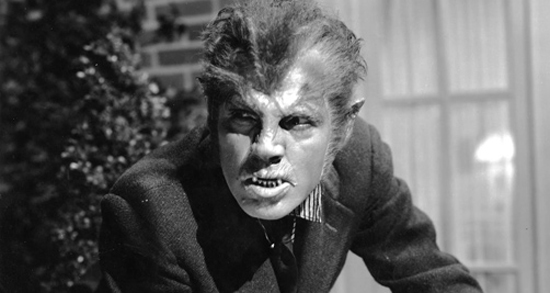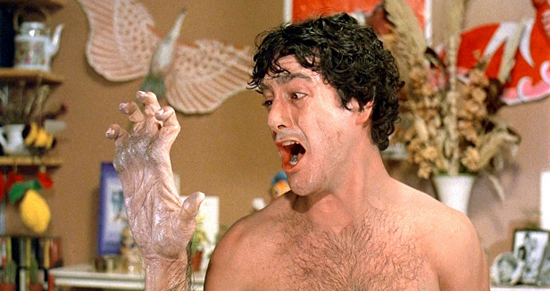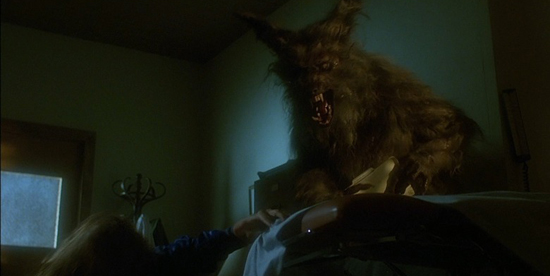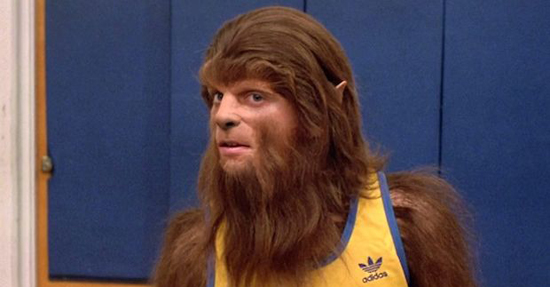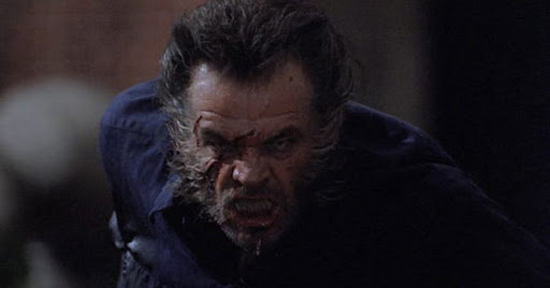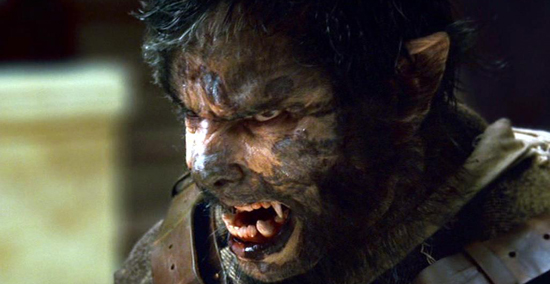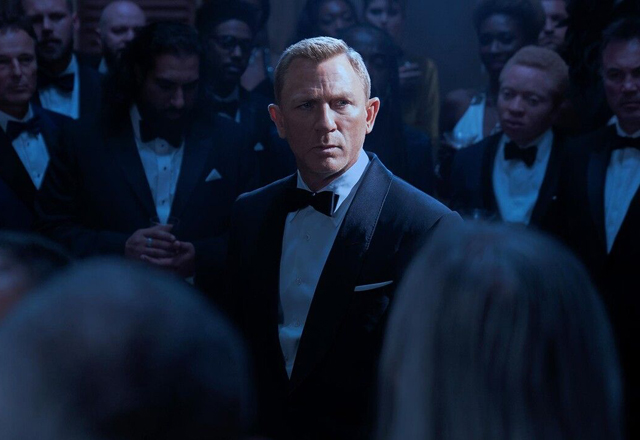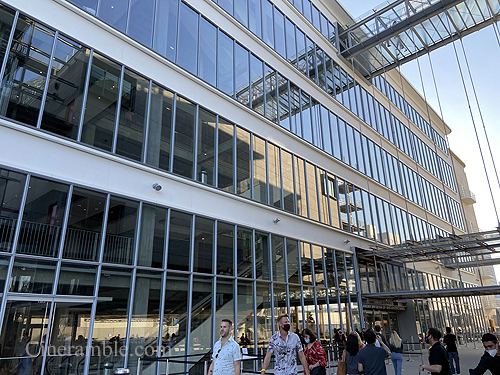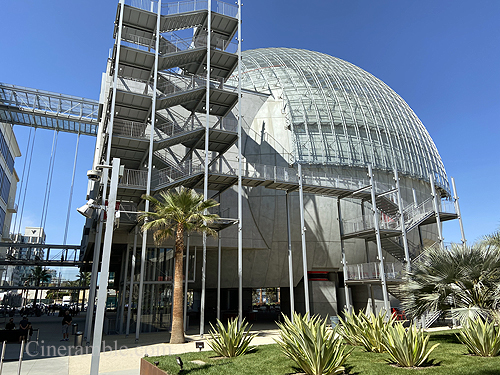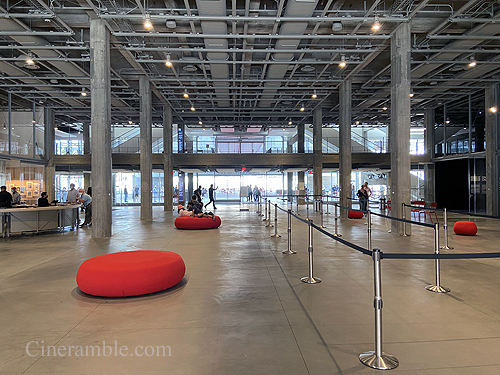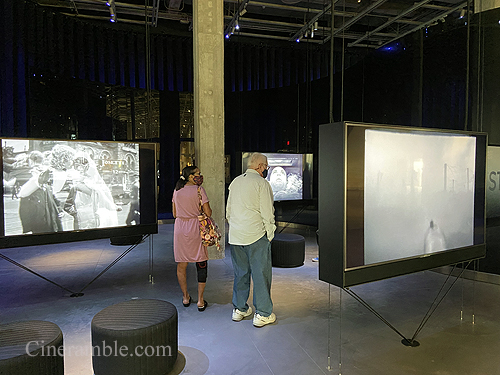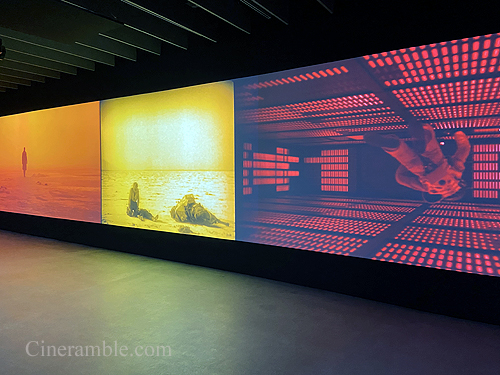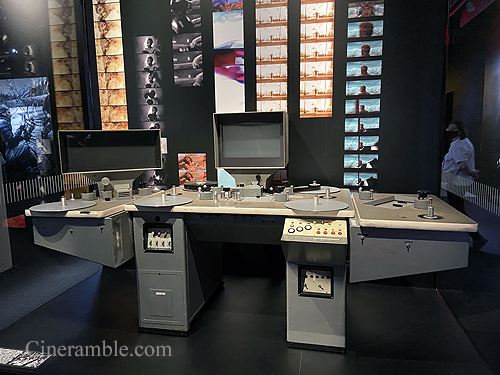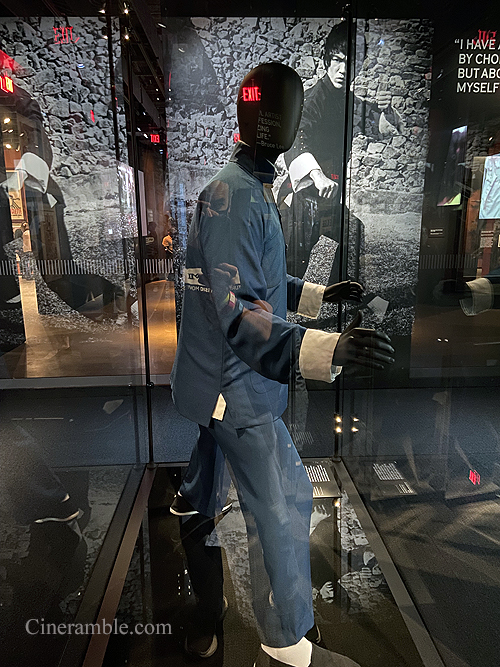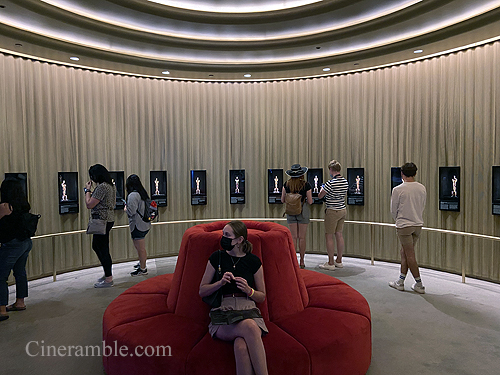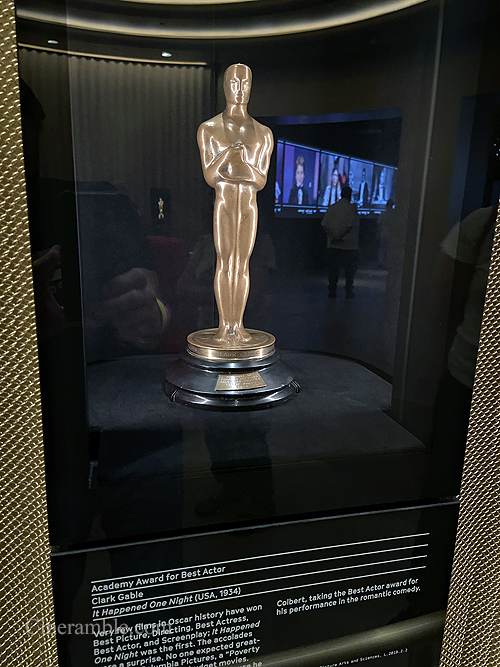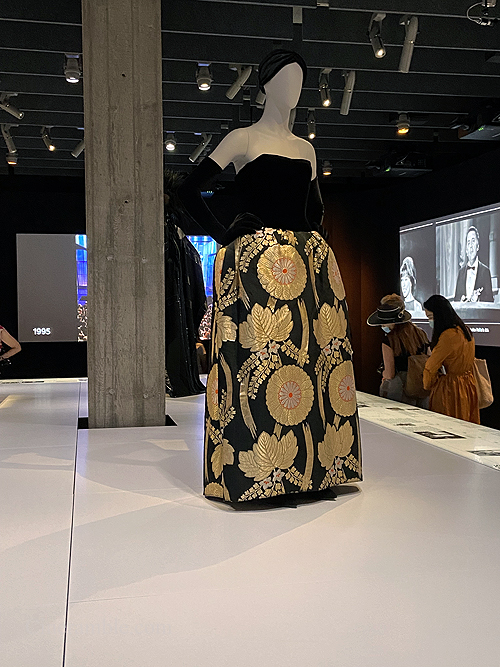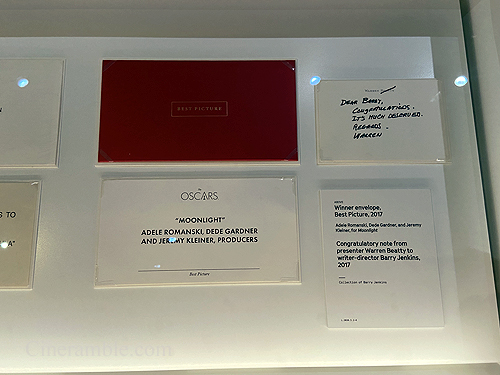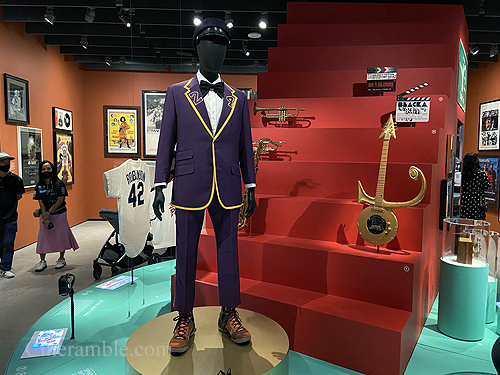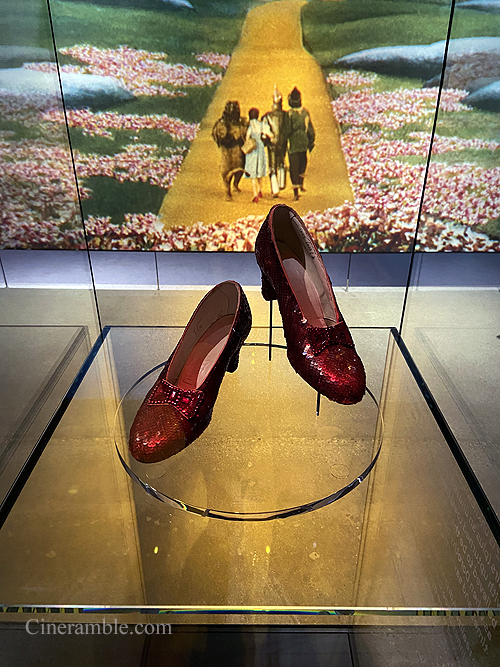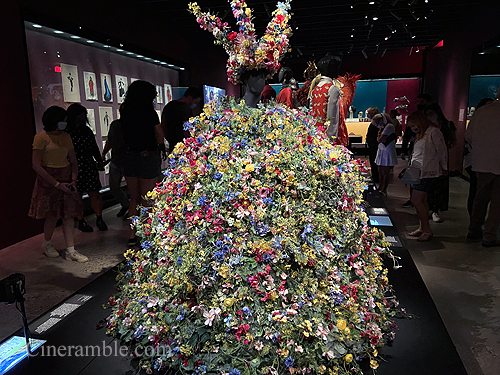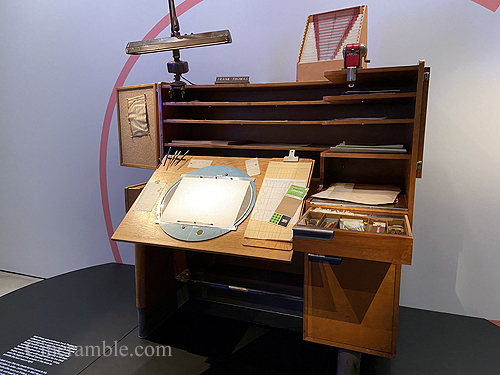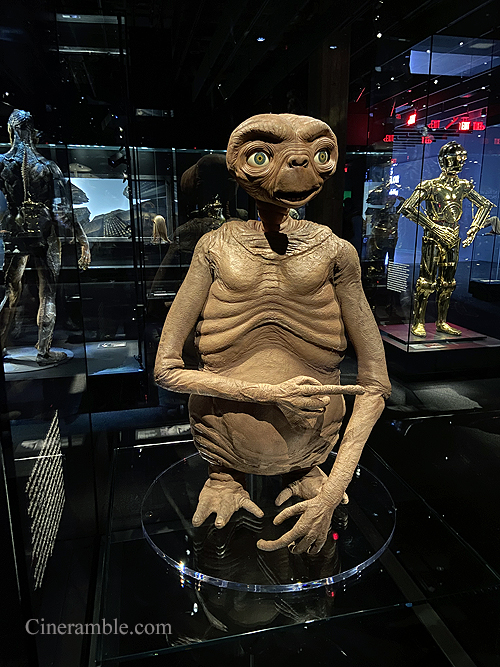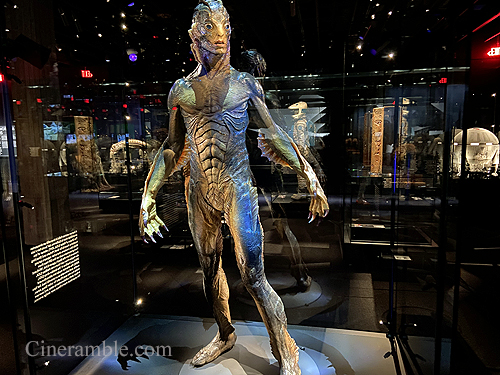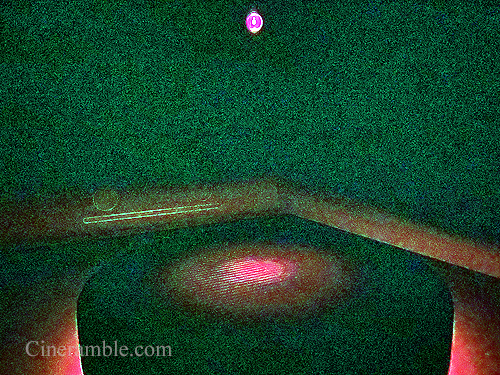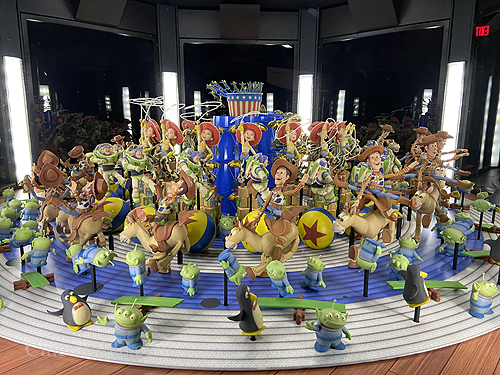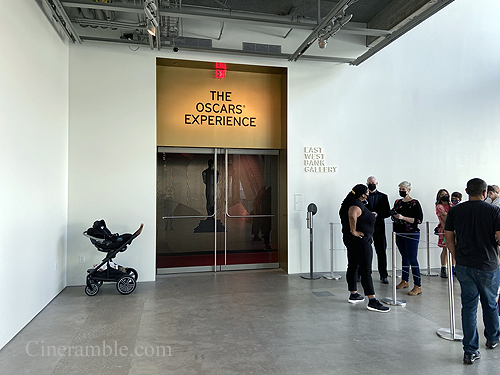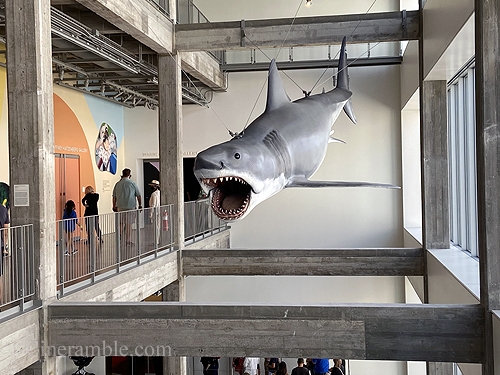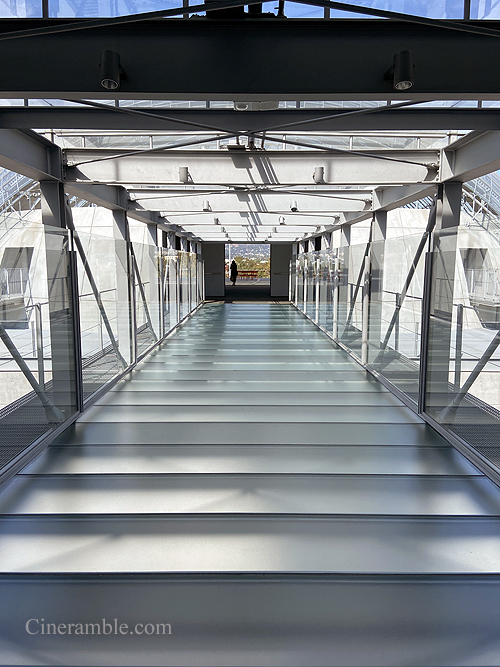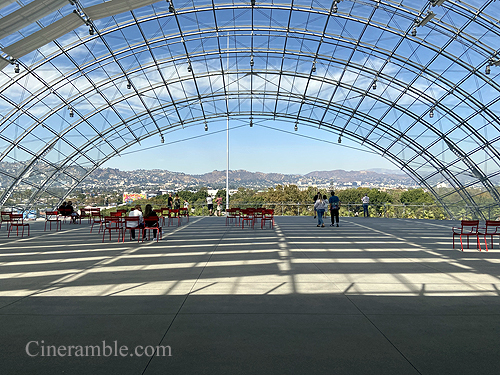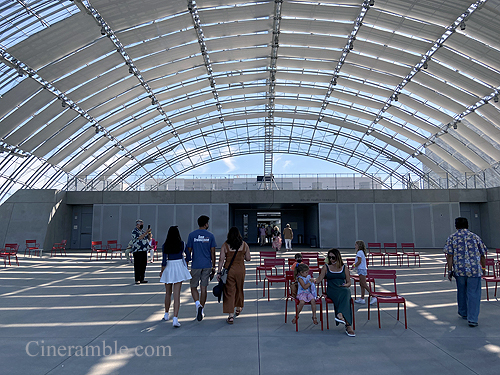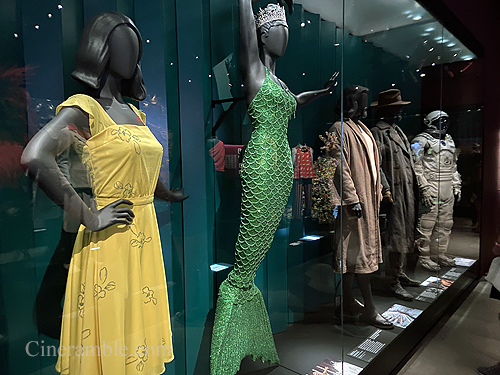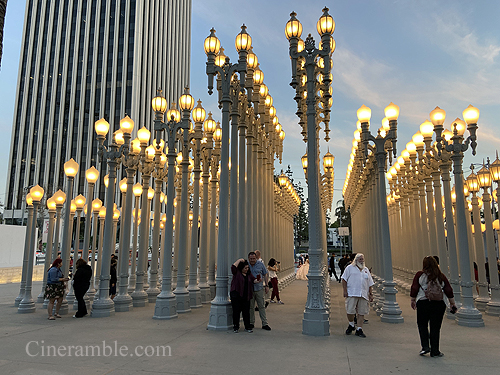
Scary movies, especially the great ones, strive to push the audience to a point of unease and dread while they watch; and in a way that fulfills the audience’s desire to be taken on that emotional ride while watching a movie. There are many tricks to creating a sense of horror within a movie, from jump scares to creepy atmosphere to all kinds of unnatural phenomena that delves into our deepest fears. But there is one particular element in horror movies that really captures the attention of an audience looking to be scared, and that’s a loss of innocence seen when something that is young and pure of soul is corrupted into something dark and sinister. This is what we know as the creepy kid trope in horror movies. Regular horror enacted or involving adults can be frightening enough, but when there is a child involved, the sense of dread is even more elevated. There’s just something so unnerving about a child at the center of a horror story, whether the target of some malevolent force or embodying the force of evil itself within a story. Sometimes even in not so scary stories, just the image of a child devoid of life and joy can have an unnerving effect on an audience. And this is why horror movies that center around or include a haunted or demented child usually become some of the most popular. Dark and foreboding kids just have this aura that elevates the level of unease in a story. And we’ve seen creepy kids in movies used any number of ways; from ghosts, to zombies, to witches and vampires, to mutated monsters, to serial killers, to evil the Devil incarnate. What follows are some of the best and most famous examples of the creepy kid trope used in horror movies, ranked through my own view of their notoriety and effectiveness as representatives of the trope used throughout horror movie history. Just regular old creepy kids are not going to make it here on this list; these are characters that are central to delivering the effectively foreboding tone of their selective movies. And some are of course among the most famous horror movie characters of all time. Fair warning, there are spoilers ahead. So, prepare yourself because we are about to talk about some of cinema’s creepiest kids that have ever been put on the big screen.
10.
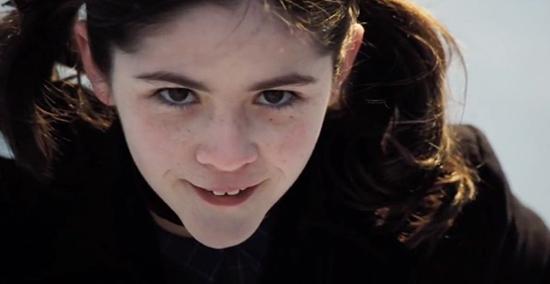
ESTHER from ORPHAN (2009)
Played by Isabelle Fuhrman
One of the most noteworthy characteristics of a creepy child in horror movies is the revelation that they are not what they appear to be. That’s definitely the case with the character of Esther from the movie Orphan, and then some. Initially, when Esther is introduced, she appears to be a normal looking child with very old fashioned sensibilities. Over the course of the movie, her cheerful childhood veneer is worn away to reveal a sinister side, which increasing grows more violent as the movie goes along. Then towards the end of the movie, we get the big reveal that (spoilers) Esther is in fact not really a ten year old child, but is in fact a middle aged woman who has a rare condition that has stunted her growth and makes her appear to be a child. With people seeing her as a child all the time, she has worked that to her advantage and scammed her way into multiple families as an orphan needing to be adopted, only for her to kill and steal her way out in order to repeat the cycle over again. The unfortunate parents, played by Vera Farmiga and Peter Sarsgaard who had already lost a child and wanted to adopt to fill that empty void, slowly realize the sinister nature of Esther and her dubious plans, and it leads to a very creepy and harrowing confrontation. The fact that Esther is revealed not to be a real child is what prevents her from being further up on this list, but she is still noteworthy as a character because that twist is so well executed in the movie and that is largely due to Isabelle Fuhrman’s remarkable performance. She in fact was really 10 years of age when this movie was filmed, so the fact that she pulled off all the aspects of this character so perfectly really is quite the achievement. She really is the only reason why the plot twist manages to land, because I don’t think the movie would have worked any other way. On paper, it is a really silly concept, but with a young performer with the right amount of conviction, a character like Esther can really become something of a nightmarish reality.
9.

COLE SEAR from THE SIXTH SENSE (1999)
Played by Haley Joel Osment
One of the most famous examples of the creepy kid tropes in movies is also one of the least scary. Though Cole is a character that certainly shares a lot of the key characteristics we associate with creepy kids in horror movies, he’s also more of a character that is meant to react to all the scary stuff around him, rather than actually be the source of eerie activity himself. Being a child with the ability to see and interact with the paranormal world, he lives in a constant state of unease which alienates him from other kids. This is more of the driving force of the character, whose detachment carries it’s own sense of foreboding feeling. He was a character that more than anything captured the imagination of audiences who first saw the movie when it came out and turned The Sixth Sense into a huge phenomenon, because of how well he could make us relate to his perpetual sense of dread. A very young Haley Joel Osment perfectly captures all those aspects of the character, as his ability to “see dead people” becomes more of a curse than anything, and his hushed performance carries a lot of eerie qualities with it. Considering that M. Night Shyamalan’s movie is more concerned with atmosphere than scares to drive the eerie mood of his movie, and Cole as a character fits well within that kind of storytelling. He’s the conduit for the supernatural activity in the movie, and most of it is not so much malevolent in nature, but more shocking in how it suddenly manifests in front of us. Osment more than anything embodied the sense of dread that pervades the movie, with his genuinely terrified looking performance and world-weary tone of voice, but unlike many other spooky children on this list, he is a character that grows and strengthens as he learns to lift himself beyond fear and find a way to turn a curse into a gift. It’s a movie about healing, even from beyond the grave, and Cole as a character fits within that mold and provides that rare creepy kid that becomes emboldened by movie’s end.
8.
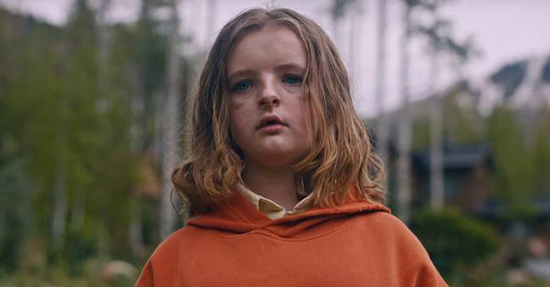
CHARLIE from HEREDITARY (2018)
Played by Milly Shapiro
The character of Charlie from Hereditary sadly does not get the same arc of fulfillment that Cole from The Sixth Sense does. Again, not overtly established as a sinister force within the story, the character of Charlie nevertheless comes across a very creepy and bizarre presence in the early part of the story. From here stand-off-ish personality to that weird clicking sound that she makes, you know that there is something very off about this child. And yet, she is still sympathetic in nature. She has a severe nut allergy that forces her into isolation while being around her fellow kids. She is also grateful for the love of her family, and shares that love in return, which becomes a major element in the story later on. But, like Cole in Sixth Sense, she also is a conduit for sinister things that befalls the family later on. Interesting enough, she also shares the same actress playing her mother as Cole from Sixth Sense, the incredible Toni Colette. Her presence definitely delivers on the creepy vibes typical of a child character like her in one of these horror movies, but what is surprising is that she isn’t a major presence in the story either. Rather shockingly, and famously, she has a date with destiny with a particular roadside utility line pole that takes her out of the movie pretty early on. Despite that, her brief scenes still leave an impact that carries on long after she is gone. A lot of credit goes to actress Milly Shapiro for finding that creepy, quiet tone with the character. It could have been far too easy to make Charlie’s weird appearance the crux of her creepiness, but Milly manages to delve deeper in her performance, to both make us sympathize with her and at the same time feel uneasy in her presence. For this Ari Aster movie that emphasizes mood to drive the terror, mostly through the performances of the actors, Charlie’s weird eccentric presence provides and effective omen for things to come within the rest of the story.
7.
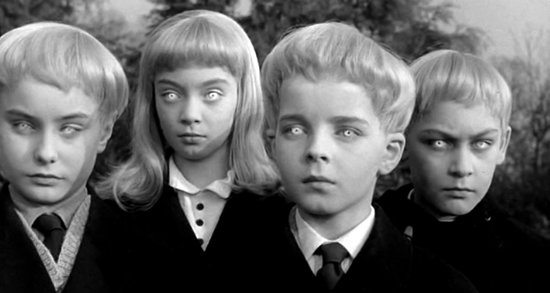
THE CHILDREN from VILLAGE OF THE DAMNED (1960)
Played by Martin Stephens and Others
The children in this classic British horror film in many ways were some of the early archetypes for the creepy kid trope. Through some unexplained occurrence, the people of one quiet little English village fall into a deep sleep only to be awoken many days later not realizing what had happened. Months later, the women of the village all give birth to children with unnaturally pale skin and hair. The children grow up rapidly, and all behave the same in a creepy detached manner. They also display unnatural powers like having glowing eyes as well as mind control and telepathy, which they are increasingly using in more sinister ways. Whether it was done by magic or through extra-terrestrial invasion, the embodiment of a sinister through the guise of children was definitely a shocking thing for audiences to witness in these last days of the Production Code. There is a specific sort of terror found in these children who lack individualism and carefreeness that you would normally see in a young child. The cold, soullessness coming from these children in the Village of the Damned really is a nightmarish concept that makes them a standout presence in the horror movie pantheon. Though defined as a group, the son of the lead characters in the movie (played by George Sanders and Barbara Shelley) named David Zellaby (played memorably by young Martin Stephens), stands out more than the others, because we see the realization of what’s going on with these children the most through how he is interacting with his increasingly terrified family. You can really see the imprint of the children from the Village of the Damned in most other creepy kids throughout the years, including many on this list. From the monotone tone of voice to the cold, deadly stares, to the lack of cheeriness that any normal child should have. A lot of that comes from how effectively creepy the children in this movie proved to be. It also might be the British accents that also contribute to the creepiness, as they give these possessed children a very old world kind of evil presence. Regardless, these creepy kids are iconic in the whole of horror movie history and left an indelible mark that is still seen today.
6.

TOSHIO from JU-ON: THE GRUDGE (2002)
Played by Yuya Ozeki
While western cinema has it’s long standing tradition of horror cinema, there is also a proud legacy of scary movies to come from the East as well. Japan in particular has been responsible for some of the most terrifying movies that have ever been made, and it stems from their own cultural fascination with the supernatural and macabre. Japanese traditions are very much centered around humanity’s connection with the spiritual plane, and how people must act in order to stave off malevolent spirits. Ghost stories are heavily present in Japanese folklore, and those same stories have found their way into Japanese cinema, creating some of the creepiest films ever made. One such ghost story that really captures the imagination is the one found in the Ju-on series, involving a very vengeful ghost at it’s center. In The Grudge, a young woman buys a home not knowing of it’s dark past. Over time, the ghostly presence inside reveals itself, which the woman realizes is part of a curse that leaves everyone who lives inside the house dead before long. The scariest ghostly presence in the home is that of a malevolent spirit named Kayako, a vengeful ghost who we learn was once a woman who lived in the house and was brutally murdered by her husband. But she is not the only ghost in the home, as our protagonist also comes across a ghost of a young boy named Toshio, who is Kayako’s son who was also brutally murdered. With bleached white skin and black ringed eyes, Toshio is also a terrifying presence, though he’s not as dangerous as his homicidal ghost mother. He’s more of a herald to warn of when his mother is about to wreck terror on the protagonist. Nevertheless, he still leaves an eerie impression, as the sight of a ghost child devoid of humanity is still a creepy sight to see. The movie was remade by Hollywood in 2004, but it retained it’s original creative team from Japan and even young Yuya Ozeki reprised his role as Toshio. It shows that even though the western audience were getting their own taste of this modern horror classic, it was still maintaining it’s Japanese identity, including the memorable ghosts that were a major part of it’s draw in the first place.
5.
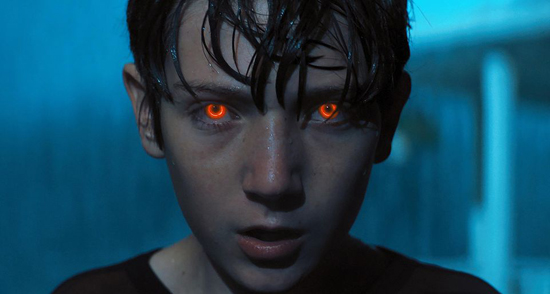
BRANDON from BRIGHTBURN (2019)
Played by Jackson A. Dunn
Here we have an example of a creepy kid in a horror movie taking inspiration from another genre altogether. For a long time, there had been a lingering What If? question in the comic book genre and that’s what would happen if the Man of Steel (Superman) were evil. In the comics, Superman was and is a force for good, fighting for truth, justice and a better life for all. But the reason he became this way was because he was set on the right path by his adoptive parents Jonathan and Martha Kent, who instilled in him the important values that would help him become the hero that we all deserve. But, what if the boy who would be Superman was not as fortunate to have that kind of level of parenting in his life? That’s the question posed by Brightburn, which is not a direct adaptation of the Superman mythos flipped on it’s head, but the similarities are very clearly drawn. In Brightburn, a boy named Brandon begins to exhibit the same kind of abilities that Superman has, including being indestructible, super strong, and capable of flight and shooting lasers from his eyes. But, unlike Superman, he is shunned for being different and is bullied by his fellow kids. His parents, ill-equipped to handle their son’s eccentricities, begin to isolate him even more, which only causes Brandon to grow more apathetic to humanity as a result, and more willing to use his powers to seek revenge against those who did him wrong. When you look at Superman’s powers in general, it is kind of a terrifying concept to think of them being used for evil purposes, and that’s what this movie explores in terrifying detail. It’s one thing for a child to have super powers; it’s another to have him become an unstoppable monster out to destroy. It makes sense that this movie comes from a creative mind who has worked both in the worlds of comic books and horror; James Gunn (Guardians of the Galaxy). In this movie, producer Gunn and his team explores the nature vs. nurture argument that is a key component of the characters that make up the comic book canon, and how the line between becoming a hero or a villain is incredibly thin. And as a result, Brandon from Brightburn becomes a wholly different kind of creepy kid that provides an interesting meta commentary on humanity and the depictions of heroes, while at the same time keeping in that tradition of being a wholly terrifying presence through the eroding of his innocence.
4.

SAMARA from THE RING (2002)
Played by Daveigh Chase
Another translation from East to West, this memorable scary child in some ways was improved upon from the Japanese original. I believe that Samara’s terrifying presence came across as more effective here is because this studio budget film was better able to bring the concept of the spectral character to it’s full potential. As we learn in the movie, anyone who watches a video of a young, black haired girl emerging from a well in a grainy, worn out VHS tape ends up dying a gruesome death seven days later. A journalist looking into the mystery (played by Naomi Watts) investigates and learns that the girl in the tape was a deeply disturbed child named Samara, who was under psychiatric care until she mysteriously disappeared. Watt’s character soon discovers that Samara was drowned in a well by her parents, who believed that she was possessed by some evil, and sought to seal her away. After uncovering the truth about what happened to Samara, Watt’s Rachel believes that she has broken the curse surrounding the video tape, hopefully saving her and her son, after both had watched it days before. Unfortunately, they learn that Samara was indeed supposed to be helped. In the movie’s most terrifying and memorable moment, we see Samara leap off of the TV screen and become a fully realized and horrifying ghost. What makes this version of the character superior to the Japanese original is because Samara still looks like a she’s made of video tape artifacts, even while she’s a fully dimensional specter, including creepy jump cut twitching and all. Only with more a substantial special effects budget an image such as that could work, and thankfully director Gore Verbinski puts it to effective use. Daveigh Chase (who in that same year also voiced Lilo in Disney’s Lilo and Stitch) also brilliantly brings Samara’s terrifying presence to life, with her unnatural way of walking and piercing vengeful grimace before she claims her victims. She indeed set a new high bar for scary child characters with her iconic final revelation in this movie, and few have managed to even come close to evoking the same kind of terror that she brings within her movie.
3.
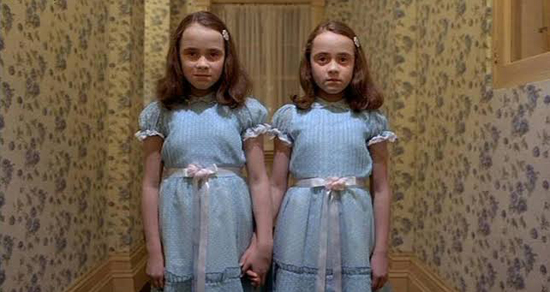
THE GRADY TWINS from THE SHINING (1980)
Played by Louise and Lisa Burns
Stanley Kubrick’s reimagining of Stephen King’s The Shining has become one of the most monumental films ever in the horror genre. It also set the bar high for everything that followed it, and rewrote much of the language of horror movies that we still see in practice today. It’s also a perfect example of using the children in peril motif for creating a terrifying horror story. At the center of the story, we have Danny Torrence (played memorably by Danny Lloyd) who has his own creepy eccentricities. However, he’s not the scariest child found in this movie by a long shot. That honor goes to the set of young girls known as the Grady Twins. Victims of their own father’s demented possession within the haunted Overlook Hotel, the Grady Twins stalk the hallways of the hotel hand in hand and just give off this unsettling creepy presence. I think that it’s the way that Kubrick first introduced the girls in the movie that sent shivers up the spines of so many people who’ve seen the movie. We follow behind Danny Torrence as he rides his tricycle through the winding halls of the Hotel in a now iconic steadi-cam shot. Once we turn a corner with him, punctuated by Wendy Carlos’ eerie score, the Grady girls appear suddenly at the end of the hall. Distant at first, the perfectly symmetrical image keeps zooming in, broken apart with quick cuts of the bloody corpses of the girls and Danny’s terrified face, with the girls repeating in eerie unison, “Come play with us Danny. For ever, and ever, and ever.” The Grady Twins don’t do much else in the movie, but that singular terrifying moment really struck a nerve with audiences, many whom I would bet have developed phobias about long hallways and turning corners in dark places. What is interesting is that this moment was an addition made by Stanley Kubrick to the story, as Stephen King mentions but never shows the twins in his narrative. Supposedly, Kubrick was inspired by an old photograph of similarly creepy looking twin girls holding hands while staring at the camera, and he believed it would be an image that lent itself well to the creepy atmosphere he needed for his movie. He was certainly right, and the appearance of the Grady Twins has gone down as one of the most terrifying moments in cinema history.
2.
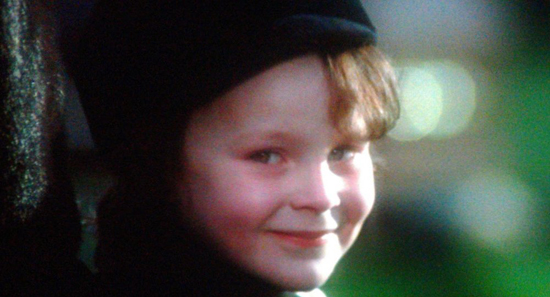
DAMIEN from THE OMEN (1976)
Played by Harvey Stephens
In this iconic Richard Donner horror flick, the creepiness of the child in question is not so much embodied in his character, but more so in the aura that he represents. There isn’t much to the character of Damien at first; he just seems like an average child. But, as more and more darker events begin to occur around him, we soon learn of Damien’s terrifying nature; that he is the spawn of Satan, and will grow up one day to become the Anti-Christ. The idea of the embodiment of all evil being presented in the guise of a young child is an especially unnerving one, and it gives the movie this genuine feeling of dread throughout. As Damien’s adoptive Father (played by Gregory Peck) investigates further into the mysterious tragedies that have occurred in the presence of the child, the dreadful truth begins to dawn on him, and he’s confronted with the harsh truth that he may have to kill a child to save the world from unbearable evil. Richard Donner masterfully raises the suspense in the movie to the point where you really feel the terror of what Damien may one day become. The cold, dreariness of the English setting really gives the movie an extra layer of foreboding atmosphere. It effectively spells out for the audience the way that Damien’s mere presence brings about emptiness of life around him, like the nanny who hangs herself, or violence erupting in his wake, like the scene with the monkeys at the zoo. And all the while, Damien appears as a mere innocent child. That is until the final image of the film, when Damien looks back at the camera with a seemingly devilish smile while attending the funeral of the parents who died after taking him in; almost like it was his plan all along. The concept of the Anti-Christ extended beyond the scriptural prophecies that he’s been known for over the centuries, and was fully brought to scary modern life with this movie. It was movies like this one that gave rise to Satanic panic in many pockets of the Western world, because through it’s story, we saw how an Anti-Christ could indeed emerge in our world today, despite the fact that this movie was meant to scare and not inspire Satanic influence in the world. It’s with the memorable final note of the movie that Richard Donner perfectly established Damien as one of the most terrifying children ever put on screen. Pure evil, wrapped up in a veneer of childhood innocence.
1.

REGAN MACNEIL from THE EXORCIST (1973)
Played by Linda Blair
What seems to be the most terrifying presence of a scary child in any horror movie is one where a sweet, innocent kid is corrupted into a monster before our very eyes. The most vivid case of this is Regan from The Exorcist. We are introduced to her as a happy-go-lucky 12 year old living with her movie star mother (played by Ellen Burstyn) in Washington D.C. As time goes on, Regan begins to go through a change of personality, loosing that sweetness that once defined her, and becoming more vulgar and violent. Soon, she begins to become less herself and more demonic in nature. And then the physical transformation begins. A scratchy, otherworldly voice speaks through her, her body begins to transform into a ghoulish pallor, and she contorts into abnormal positions, including having her head spin completely around. Eventually, it’s determined that she is possessed by the Devil and must be exorcised in order to save her life. William Friedkin’s horror classic still manages to haunt so many years later, because of it’s frighteningly vivid portrayal of demonic possession. The movie is devoid of all pretense and treats this supernatural story like it’s a true to life drama, which makes all the demonic elements feel more real as a result. Linda Blair’s performance is especially memorable, because it’s her underneath the layers of make-up and flailing herself manically on the bed during the possession scenes. It’s a lot to ask of for a young actress like her in that time, but she tackled it all in a remarkable and brave way. The image of a possessed Regan, tied to her bed, spitting up green goo, and levitating in mid air are still the stuff of nightmares and they’ve firmly planted Regan and this movie into the stuff of horror legend. Regan eventually has the demon expelled, but the ordeal is nothing short of a nightmare brought to life on screen, and Regan at the height of her demonic self is still one of the most terrifying images ever brought to cinema. Through the complete corruption of an innocent soul and the creepy body horror that is inflicted on this young person, there really is no more creepy kid in cinema than a fully possessed Regan in The Exorcist.
So, there you have what I think are the most memorable and effectively creepy children ever to be brought to the silver screen. There are of course many more notable examples out there, and it’s a trope that even isn’t limited to horror movies. I’ve seen the creepy kid trope used in comedies sometimes to identify an eccentric outsider kid sometimes, which in some ways is a way of making fun of the at times overused cliché. Though it can be oftentimes overused to the point of irrelevance, good horror movies have still managed to make the trope work. Brandon in Brightburn and Charlie from Hereditary are good examples of fairly recent iterations of the trope used well, mainly due to the fact that they play around with some of the audience’s expectations with the commonly used trope. And as we’ve seen, a creepy child is often part of some of the most iconic horror movies that have ever been made, including The Shining and The Exorcist, where a child is front and center within those stories. I think that the effectiveness of the trope comes from the expectation of the genre, where having a child in the presence of danger and overwhelming evil just ups the suspense because it’s someplace that we all acknowledge a child should never be. Going further and having the child be the source of evil itself, like The Omen’s Damien or The Ring’s Samara just increases the scary factor even more. These horror movies have also helped to establish some very disturbing characteristics of creepy kids, including the joyless montone voice and the lifeless stare, that if done right can still send a chill down ones spine. We all expect monsters and ghouls to come in terrifying, larger than life packages. It just becomes more unsettling when something as adorable and innocent as a young child becomes that instrument of terror in a movie. But, it’s a trope that in the end gives us the most memorable frights, and these ten creepy kids are perfect examples of that. So, even though scares may be coming in a smaller than expected package, it nevertheless can deliver the biggest of frights at the movies.


